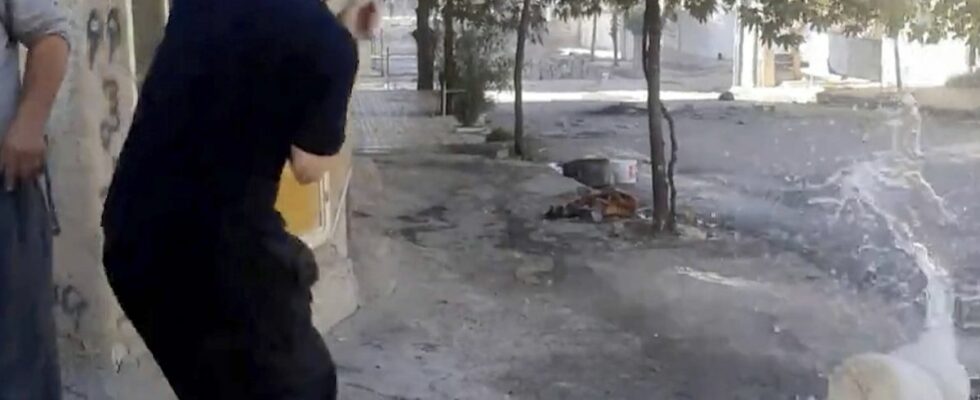Security forces fired live ammunition on Monday to quell protests in Kurdish areas of western Iran, Norway-based Iranian Kurdish rights group Hengaw said. The group reported 13 deaths in twenty-four hours in these regions but this figure could not be verified immediately. Hengaw posted videos she said showed law enforcement firing live ammunition in the towns of Piranchahr, Marivan and Javanroud.
Reinforcements have been sent in recent days to the Kurdish regions, one of the centers of the protest movement sparked on September 16 by the death of Mahsa Amini, a 22-year-old Iranian Kurd arrested by the morality police for breaking the code strict dress code requiring women to wear the veil in public. Demonstrations there have recently intensified, particularly during the funerals of demonstrators killed by the security forces.
According to Hengaw, at least seven people were killed in Javanroud, four in Piranchahr and two in other localities. The Oslo-based NGO Iran Human Rights (IHR) also posted footage it said showed security forces firing live ammunition in Piranshahr and a mother’s grief over the remains of a teenage boy. 16 years old killed on Sunday, just before his funeral. “Mother, don’t cry, we are going to take revenge”, shouted in Kurdish people present at her side, according to the NGO.
disrupted internet
Another video posted by Hengaw shows what the group portrays as residents of Javanroud trying to evacuate a body in a street trying to protect themselves from gunfire. Other images show heavily armed security forces moving from the city of Sanandaj, the capital of Kurdistan province, to those of Mahabad and Boukan.
The New York-based NGO Center for Human Rights in Iran (CHRI) referred to “incessant shooting and images of bloody people being evacuated to safety” in Javanroud. The NetBlocks site, which monitors internet blockages around the world, reported on Monday a “significant disruption” to internet access during the latest protests, stating that “mobile internet access was cut for many users.
A gesture at the World Cup
US Secretary of State Antony Blinken said on Twitter that he was “greatly concerned that the Iranian authorities are increasing violence against protesters, especially in Mahabad”, in the province of West Azerbaijan.
In Doha, the eleven Iranian players refrained from singing their national anthem before their first match of the 2022 World Cup. The slogan symbol of the movement, “Women Life Freedom”, appeared before kick-off on a banner in a bend in the stadium occupied by the Iranians, before disappearing. “Azadi!” Azadi! (“Freedom! Freedom!”) also sometimes rose from the stands.
Strikes in Iraq
The Kurds represent one of the main ethnic minorities in Iran – about 10 million out of 83 million inhabitants – and mainly adhere to Sunni Islam and not to the dominant Shiism in the country.
At least 378 people have been killed in the crackdown on protests, according to a latest IHR report. Among them, 255 died during protests linked to the death of Mahsa Amini and 123 in the province of Sistan-Baluchistan (southeast), including more than 90 on September 30 in the provincial capital Zahedan, during demonstrations against rape of a teenager attributed to a policeman.
On Monday, a policeman was killed and another injured by gunfire from “criminals” in Zahedan, General Mohammad Ghanbari, the provincial police chief, told the Fars agency. The assailants fled.
Separately, Iranian forces shelled Iranian Kurdish opposition groups based in neighboring Iraqi Kurdistan, killing a fighter from those factions accused of stoking protests in Iran. This is the second time in less than 10 days that the Revolutionary Guards, Iran’s ideological army, have launched drone and missile attacks against the Kurdistan Democratic Party of Iran (PDKI) and the nationalist group Iranian Kurdish Komala, settled for decades in the autonomous Kurdistan region (north).

